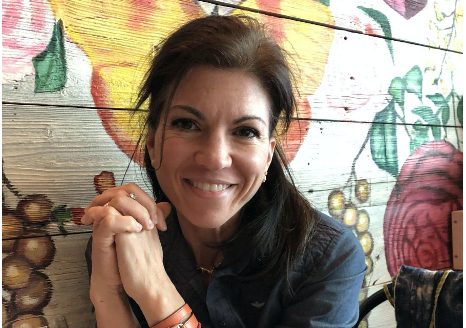diaTribe’s Top 12 Articles of 2020
By Matthew Garza
During an immensely challenging and unprecedented year, diaTribe continued to create, curate, and publish helpful information for people with diabetes – read our twelve most popular articles of the year. Highlights include intermittent fasting, how to navigate the COVID-19 pandemic with diabetes, and the latest in diabetes tech.
It’s been a busy year at diaTribe – our community grew to more than 250,000 weekly subscribers, and over 3.1 million people visited us at diaTribe.org. As we reflect on a year that included both the uncertainty and difficulty brought on by the COVID-19 pandemic, as well as exciting news on diabetes technology and therapy approvals and new indications, we’re announcing our top twelve most-read articles from 2020. Share this list with your healthcare team, friends, family, and anyone you know who might benefit.
Honorable Mention: Studies Suggest Diabetes Drugs Help Hearts and Kidneys for People With or Without Diabetes

Results from exciting clinical trials this year showed that SGLT-2 inhibitors Jardiance and Farxiga can support heart and kidney health.
12. Intermittent Fasting: Stabilizing My Morning Blood Sugars

Intermittent fasting and time-restricted feeding (IF/TRF) have received a lot of praise and press due to their health benefits. These approaches to meal timing create blocs for either consuming food or fasting during certain hours of the day. Justine Szafran shares her personal experience using intermittent fasting to keep her morning blood sugars in range and to feel better all day long.

The COVID-19 pandemic has led to multiple changes in the healthcare system, including a move by The Center for Medicare & Medicaid Services (CMS) to alter the agency’s requirements to enable easier access to continuous glucose monitors (CGM). How? In the midst of a major national shift to telemedicine, they removed the need for in-person visits, certain lab tests, and finger stick documentation. We know the reduced barriers weren’t felt everywhere and it’s our hope that the continued policy changes make it easier for people with diabetes to move to CGM or strongly consider it.
10. Omnipod Horizon System to Integrate Freestyle Libre 2, G6, and G7 CGMs

In 2020, Insulet partnered with two leading continuous glucose monitor (CGM) companies to develop the Omnipod Horizon automated insulin delivery (AID) system. Omnipod Horizon is expected to launch in early 2021, using CGM data from the Abbott FreeStyle Libre 2 and the Dexcom G6 (and upcoming G7).
9. FreeStyle Libre 2 Cleared by FDA as iCGM

More diabetes technology news, from June: the FDA cleared Abbott’s FreeStyle Libre 2 CGM. Similar to the original FreeStyle Libre in many ways, the newest version includes Bluetooth connectivity – this enables optional high and low glucose alerts, and the ability to integrate with AID systems. The FreeStyle Libre 2 has the same size and price as the original sensor.
8. Use Your Blood Glucose Meter to Help You Improve Your Health
(1).png)
While many people with diabetes use a blood glucose meter to check blood sugar levels, you may not be using your meter often enough to help you feel better. Ashlee Ernst and Betsy Otten, two diabetes nurse educators, share tips on how to get the most out of your glucose checks, how to read data reports, how to improve your Time in Range, and how to find a meter that’s right for you.
7. What’s Coming and What’s Delayed in Automated Insulin Delivery?
.png)
With several clinical trials on hold due to the pandemic, we shared a summer roundup of the latest updates on the future of automated insulin delivery systems, including Medtronic’s MiniMed 770G and 780G, Tandem’s Control-IQ, and Insulet’s Omnipod Horizon.
6. Stay Safe – CDC Recommends Cloth Face Masks for all People in Public
.png)
In one of our early COVID-19 articles, we answer questions about cloth face masks, like why it’s so important to wear one, what the CDC recommends, and even how to make a correct, effective, ultra-safe face mask.
5. Type 2 Remission: How I Got Here and How I’ll Stay Here
.jpg)
Michael Hattori, a nurse and soon-to-be Certified Diabetes Care and Education Specialist, discusses how he used two main strategies – intermittent fasting and walking after meals – to put his type 2 diabetes into remission.
4. Not Too High, Not Too Low: Your Blood Pressure Matters Too
.jpg)
Blood pressure is an important force in the body, especially for people with diabetes. Renowned Professor Philip Home discusses how to manage your blood pressure, what it means to have high blood pressure, and blood pressure targets.
3. I Had COVID-19 and Diabetes

In one of our most popular articles this year, Cynthia Katsingris shares her early experience testing positive for COVID-19. Though it’s a scary experience for anyone, people with diabetes are at an increased risk for severe illness and negative outcomes from COVID-19 infection. Thankfully, thirty years of diabetes management prepared Cynthia to take care of her body, fight COVID-19, and recover from the virus.
2. Rising Blood Sugars, Rising Concerns: New Film Lays Bare the Diabetes Epidemic

diaTribe writer and editor James Hirsch reviews the outstanding PBS documentary, “Blood Sugar Rising,” which explores the jarring statistics and physical and emotional toll of diabetes, giving new voice to the diabetes epidemic in the US through the lens of four heroic individuals. Some of these heroes include food justice warrior, Karen Washington, and Dr. Valarie Blue Bird Jernigan, the Director of the Center for Indigenous Health at Oklahoma State University.
1. Coronavirus Preparation Strategies for People with Diabetes
.png)
For much of the world, 2020 has been defined by the COVID-19 pandemic. In our most-read article this year, Dana Lewis, who has lived with type 1 diabetes for more than 17 years, shares early strategies for preventing the spread of the virus and how to stay as safe and healthy as possible. Though we have learned so much since March, and we are hopeful that vaccines are just on the horizon, we continue to practice many of these same strategies to keep ourselves and our community safe.








